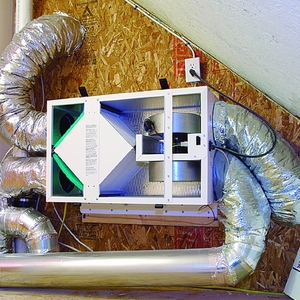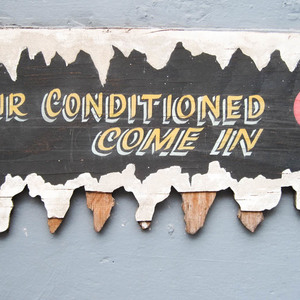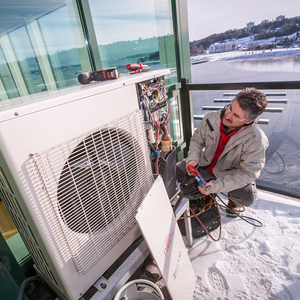
Few phrases are batted around as casually, and with such little precision, as “high-performance windows.” If you’re building a net-zero house or seeking Passive House certification, high-performance windows will be a given. Taking on a major renovation of an existing home? High-performance windows are probably part of the plan.
In reality, there is no such thing as a high-performance window that’s suitable for all climates, all housing types, and all solar orientations. “Manufacturers are going to define ‘high performance’ as they see fit,” says Steven Urich, director of programs at the National Fenestration Rating Council (NFRC). “There’s no standard definition for it across the industry, as far as I know.”
As important as windows are to the overall building enclosure, they are but one of many components that have to work together. The ideal window for one part of the country may not work as well in another.
“It’s the whole-house concept, which is what Passive House is trying to get at,” Urich says. “This idea that windows alone, your HVAC system alone, insulation alone [will be the end-all solution is unreasonable; no single component can] determine the energy efficiency of your home.”
Performance ratings for windows are a combination of several factors. The glass, or glazing, is key because it takes up most of the overall area of a window. Insulating glass is amazingly diverse, ranging from simple two-pane assemblies of clear glass to multi-pane sandwiches with low-e coatings and gas infill, all with different performance characteristics that can be tuned for a specific application. Other key parts are the window frame, the spacers between the panes of glass, and the hardware that ensures a tight seal.
Reading the NFRC label
The NFRC is a non-profit industry group that tests window performance and publishes the…
Weekly Newsletter
Get building science and energy efficiency advice, plus special offers, in your inbox.

This article is only available to GBA Prime Members
Sign up for a free trial and get instant access to this article as well as GBA’s complete library of premium articles and construction details.
Start Free TrialAlready a member? Log in















14 Comments
I’m looking for replacement windows for a Florida home. Besides performance, what frame material will last in warm and humid conditions?
Hi, Vija. At our Miami, FL home in 2014 we had the windows replaced with CGI aluminum frame impact windows. So far we have been pleased but (knock wood) no bad hurricanes since then.
For better thermal performance, vinyl impact windows are a better choice. If money is no object, thermally broken aluminum impact windows are nice too.
PGT has bought up a lot of window manufacturers (including CGI mentioned above). After digging around a bit, the transition for the acquired companies doesn't seem very smooth. It seems PGT is focused on supporting PGT and the other companies are suffering. I'm wondering if PGT is going to absorb them all into the parent brand? Or if it is just some pains in the transition process?
I hope at some p0int Scott considers collecting these blogs for publication in a book much as Martin did.
I'm a non-professional, looking at efficient options for building my residence.
Could you clarify the line "U-factor. A number from 0.2 to 1.2" which is then paired with multiple mentions of <0.2 U-factors throughout the article? Should I read this as "A number usually ranging from 0.2 to 1.2, with more efficient windows available with U-factors less than 0.2" ?
Your reading is correct. A dual pane window will never really be better than 0.20 Uw. Anything lower and you have to bump up to triple pane, which will cost at least 20% more.
I priced good triple pane windows from numerous sources recently and just wanted to pass along that the cost for R6-7 PVC is not any more than most standard US windows. I paid $60/sf including windows and doors, although some manufacturers were definitely higher. Alu clad wood was quite a bit more of course.
For me the topic isn't about energy efficiency, but about IAQ, specifically mold and condensation. Building a very tight house with low R windows is a big risk. We need to be looking at durability as much as, or more than, energy efficiency.
What companies did you consider for pvc windows getting R6-R7 for no more than standard US windows?
qofmiwok,
I'm not sure the tightness of the house plays into it. The chance of mold growth or condensation is due to high indoor humidity levels. Those need to be moderated whether the house is tight or not. Relying on a higher R window to deal with it doesn't really address the problem.
Lost in this discussion
1. Sound restriction Is usually noticebaly superior with triple panes ceteris parabis (ie compared to same companies /line in dual opine)
2. Vinyl windows do NOT last 50 years, I can assure you , with any degree of UV hitting them. TE a exterior trim esp is what fails, not the mechanics/metal wood portions . Now certainly the newer UV products are stable for 20 years, but at thirty will invariably see some bleaching (esp in not white)
3. More expensive triple pane windows generally ARE better built.tighter/If you can find me an american brand window dual pane that is as stable and non leaking as a reputable European brand, let me know. American manufacturers knwo/acknowledge this as they are gradually adding windows that lock on at least three sides
4. A really airtight window dual pane is typically better to purchase than a similarly priced triple pane but more leaky triple pane (where will you encounter this ? American triple pane vs european dual pane)….too much emphasis on U value IMO. You want a really really air sealed window and one that is less likely to leak is gas in the future (ie aluminum or better yet fiberglass frames . Thsi is analogous to houses that overinsualte then economize on their glazing (over well >20% of the entire wall surface area, and way more on most modern designs )
5. You might argue that 30 year windows are good (great ?) but you NEVER want to retrofit windows in a house. Its a nightmare, hugely expensive, and poses real challenges reestablishing all he barrier layers . I’d certainly consider a dual pane fiberglass window over a triple pane vinyl window in many cases. Most custom homes are “end game for “ most clients, and if you still have chidlren at home (ie you are <<65 years of age) , strive to have windows that you wont have to change out when you are 80 + years old ! What a nightmare.
Your definition of U-factor says it's a number between .2 and 1.2. Then you give an example of a .18 U factor. ???
Scroll up to comments #5 and #9.
“[Deleted]”
EnerLux fiberglass windows and doors out of Nebraska manufacture high-end "European type" windows:
https://www.youtube.com/watch?v=n2Co-Ix1nok
Log in or become a member to post a comment.
Sign up Log in